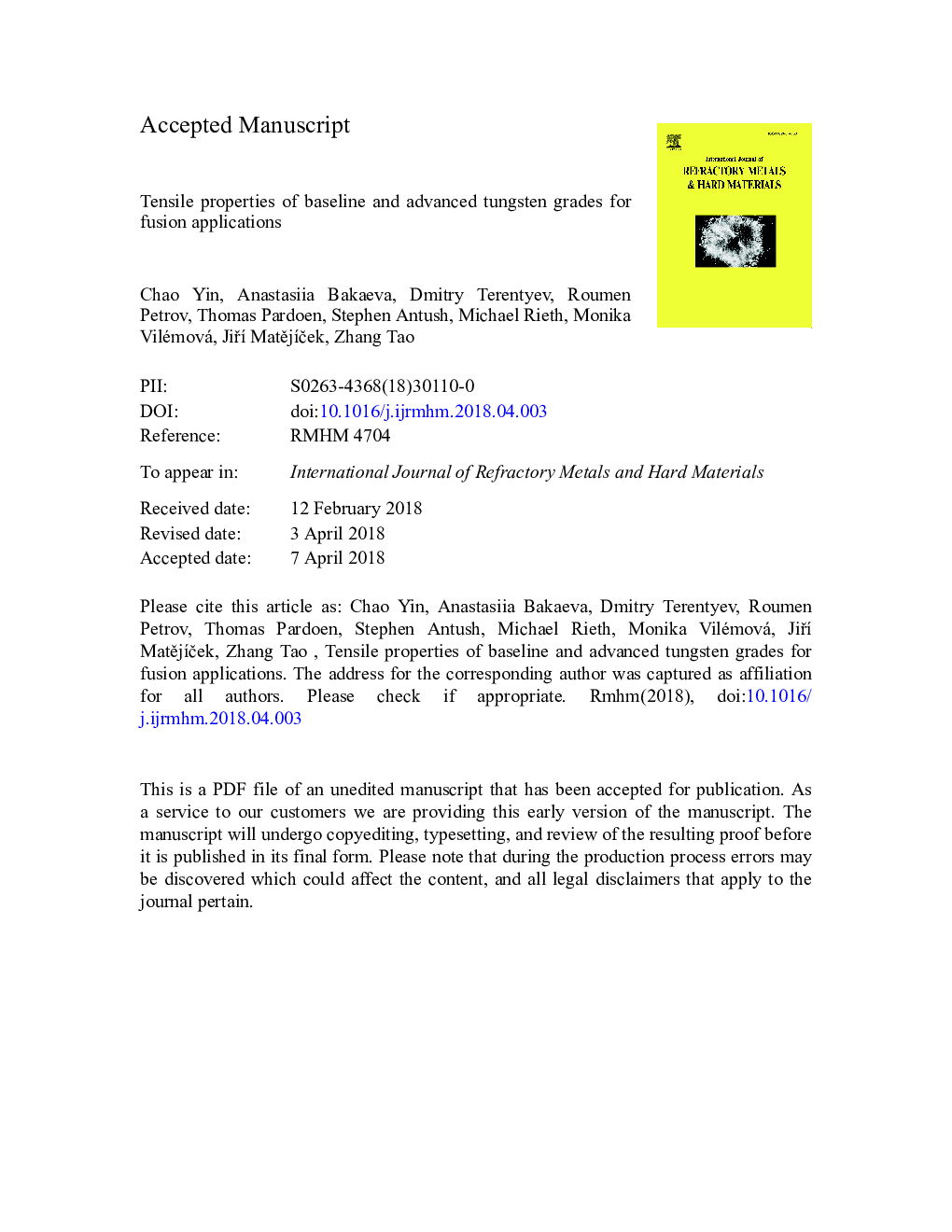| Article ID | Journal | Published Year | Pages | File Type |
|---|---|---|---|---|
| 7989569 | International Journal of Refractory Metals and Hard Materials | 2018 | 20 Pages |
Abstract
This work aims to establish a mechanical reference database of tungsten materials that are currently under assessment of their susceptibility to neutron irradiation. To obtain the mechanical properties, we performed a set of parametric tests using mini-tensile sample geometry and fracture surface analysis. Six different types of tungsten-based materials were assessed: two commercial grades produced according to ITER specifications in Europe and China - i.e., Plansee (IGP) and AT&M (CEFTR), and four perspective lab-scale grades. These are grades reinforced with particles of TiC, Y2O3, and ZrC (W1TiC, W2YO, and W0.5ZC, respectively) as well as fine grain structure W (FG). Tests were performed in the temperature range 150-600â¯Â°C, selected specifically to reveal the ductile to brittle transition temperature and mechanisms of full plastic deformation. Most of the materials showed onset of the ductile behavior at 300â¯Â°C, except FG and IGP (in transverse orientation) grades. High yield strength and ultimate tensile strength were recorded for CEFTR, W0.5ZC, and W1TiC at the maximum investigated temperature (600â¯Â°C), which can be considered as promising for performance in the high-temperature regime. The lowest threshold temperature for ductility was determined to be 200â¯Â°C registered for the W0.5ZC grade, CEFTR (in longitudinal orientation) grades, and IGP (in longitudinal orientation) grades, hence demonstrating its high potential for divertor applications.
Related Topics
Physical Sciences and Engineering
Materials Science
Metals and Alloys
Authors
Chao Yin, Dmitry Terentyev, Thomas Pardoen, Anastasiia Bakaeva, Roumen Petrov, Steffen Antusch, Michael Rieth, Monika Vilémová, JiÅÃ MatÄjÃÄek, Tao Zhang,
